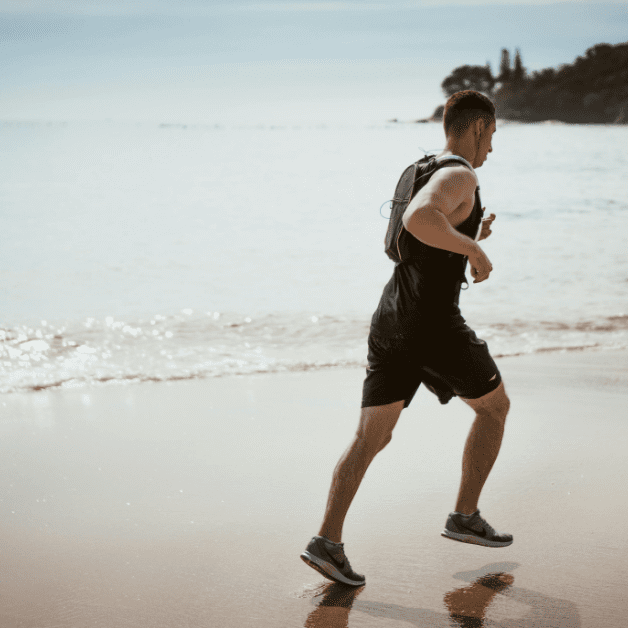Beginner’s Guide to Running Vests
Welcome to the Endurance Athlete’s Gear Guide Series! This series explores essential and optional equipment to enhance your performance and experience in endurance sports like running, mountain biking, and triathlons. We’ll help you navigate the world of gear, offering insights on everything you might consider buying. Whether you’re a seasoned pro or just starting, we aim to provide practical advice to optimize your performance and support your endurance journey. Do you have something in mind? Share your ideas and questions in the comments. Stay tuned for in-depth guides, product reviews, and expert tips to help you gear up and crush your goals!
First up: Beginner’s Guide to Running Vests
Unless you only run on a track where all your essentials can be staged nearby, consider a running vest for training and possibly while racing. They are a comfortable and efficient way to carry essentials during long runs. Whether an ultrarunner tackling trails for hours or a road runner prepping for a 10K, a well-chosen running vest can significantly enhance your performance and experience. In this comprehensive guide, we’ll explore the benefits of running vests, key features to consider, popular models, and tips to help you choose the perfect one for your needs.
Why Use a Running Vest?
Running vests are designed to distribute the weight of your gear evenly across your torso, minimizing bounce and discomfort. Unlike traditional backpacks, which can shift around and cause chafing, running vests fit snugly to your body, making them ideal for carrying hydration, nutrition, and other essentials over long distances.
Key benefits of running vests include:
- Mobile phone: I mention it first because this is the item runners want with them most. There is no good reason to leave it behind anymore. It can offer both convenience and emergency applications. Some apps track your activity without needing a GPS watch, music, maps, payment methods, personal identification, etc.
- Hydration on the Go: Most vests have built-in hydration systems, such as bladder (water reservoir) compartments or front pockets for soft flasks, ensuring you stay hydrated without stopping. I like the size and design of the HydraPak: Contour 3L for my larger pack and 1.5L for the smaller.
- Storage for Essentials: Running vests provide easy access to items like energy gels, snacks, keys, and a phone, allowing you to focus on your run.
- Comfort and Fit: With adjustable straps and a design that hugs your body, running vests reduce the risk of chafing and muscle strain, even on the longest runs.
- Hands-Free Running: Vests allow you to run without the distraction of holding water bottles or other items.
| Note on Hydration and Nutrition |
| I can run for two hours in a moderate climate without hydration or nutrition. When it is challenging to carry hydration and nutrition, it is easy to go without it. This does not mean that I should! Staying hydrated with some nutrition can allow for a better workout and faster recovery. The running vest makes hydration and nutrition during running so much easier. With faster recovery, your next workout and overall fitness will benefit! |
Types of Running Vests
Running vests come in different styles to cater to various needs:
- Hydration Vests: Designed for long-distance running, these vests feature built-in water bottles or hydration bladders.
- Running Pack Vests: Ideal for trail running or ultrarunning, these vests offer more storage space for snacks and extra gear.
- Lightweight Vests: Perfect for shorter runs, these vests provide minimal storage and a sleek design.
Key Features to Consider
When choosing a running vest, consider the following features to ensure you select one that fits your needs:
- Capacity: Running vests come in various sizes and capacities, typically ranging from 2 to 12 liters (or more). Choose based on the length of your runs and the gear you need to carry.
- Short to Medium Runs: A vest with 2-5 liters capacity is sufficient for minimal gear.
- Long Runs and Ultras: For longer distances, opt for a vest with 6-12 liters of capacity to accommodate more hydration, additional nutrition, and additional gear.
- Hydration System: Consider how you prefer to stay hydrated:
- Bladder System: Many vests have a dedicated compartment for a hydration bladder (1 to 3 liters). This is my preference as it allows for sipping without breaking stride.
- Soft Flasks: Some vests have front pockets for soft flasks, which are more accessible and allow you to monitor your water intake easily. I prefer to use these front pockets for other items.
- Use Both: Use a bladder system with soft flasks. This can allow you to carry more water. You can also have the option of drink-mix in one and plain water in another.
- Fit and Comfort: Look for vests with adjustable straps across the chest and sides, allowing you to customize the fit to your body shape. Some vests also offer different sizes based on chest circumference (S/M/L/XL).
- Weight Distribution: Ensure the vest’s storage compartments are balanced, with options to place heavier items close to your back and lighter items in front pockets. This is another reason why I prefer the bladder over the flasks.
- Breathability: Look for vests made from lightweight, moisture-wicking materials that allow air to circulate, keeping you cool and reducing the risk of chafing.
- Accessibility: Easy access to your gear can make a big difference during a run. Front pockets, especially those on the straps, are excellent.

Image by Dalle
My Favorite Vest
Many vests are available, varying in size, adjustability, pocket location, and hydration capacity. My current favorite is the Dynafit Alpine 8 Vest. It has a capacity of 8 liters and readily holds a 3L bladder. There are zipper pockets and pockets to hold two 20-oz flasks. I like the fit and the ease of adjusting as I use the hydration. This is my favorite vest for training runs over 2 hours and ultra-races.
How to Choose the Right Vest for You
When selecting a running vest, consider the following steps:
- Assess Your Needs: Think about your runs’ typical conditions and distances. Your answers will guide you to the suitable capacity and features.
- Try It On: Visit a store to try on different vests. Adjust the straps and move around to feel how they feel. Support your local running store if you can!
- Consider the Weight: Find a balance between functionality and weight to avoid feeling burdened on your runs.
- Check the Return Policy: If purchasing online, check the return policy if the vest doesn’t fit as expected. REI has a one-year return policy if you are not satisfied.
Maintaining Your Running Vest
Once you’ve found the perfect vest, taking care of it will extend its life:
- Clean Regularly: After each run, empty and clean the vest. Empty and rinse your hydration systems. If I save leftover drink mix, I throw my half-empty bladder in the freezer.
- Store Properly: Store your vest in a dry, cool place away from direct sunlight.
Conclusion
An excellent running vest is more than just gear; it’s a crucial companion on your endurance journey. By considering factors like capacity, hydration, fit, and accessibility, you can find the vest that best supports you. Whether training for your first marathon or tackling an ultra-distance race, the right vest will equip you to push your limits and achieve your running goals.
Thank you for reading! Please leave comments about your favorite vests and any tips you have. Subscribe to get more updates from Med Fit Culture.
Feature Photo by Leandro Boogalu on Pexels

Join Our Mailing List